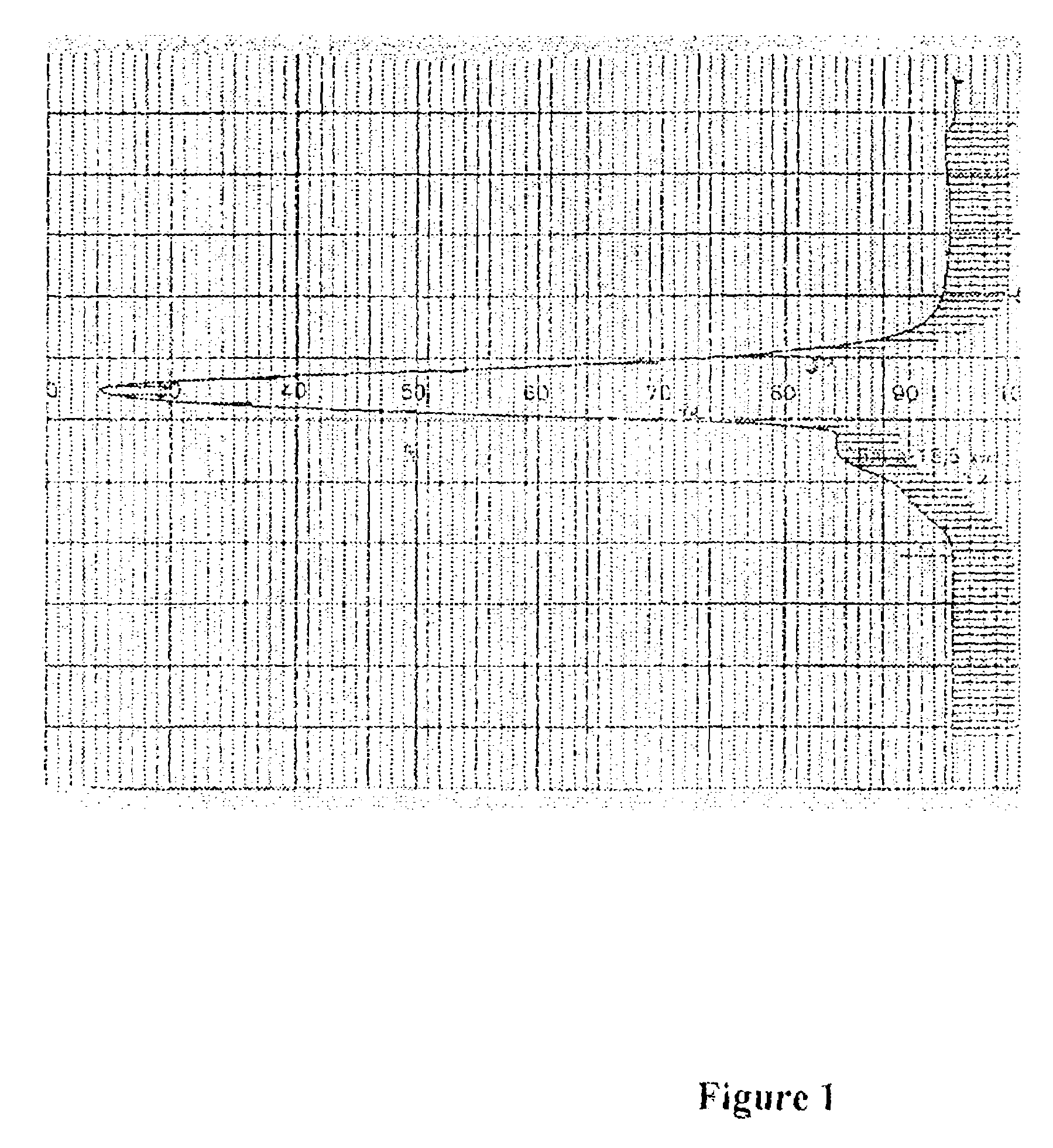Biospecific binding reactants labeled with new luminescent lanthanide chelates and their use
a technology of luminescent lanthanide and biospecific binding, which is applied in the field of biospecific binding reactants labeled with new luminescent lanthanide chelates and their use, can solve the problems of reducing the yield of labeled materials and problems such as purification
- Summary
- Abstract
- Description
- Claims
- Application Information
AI Technical Summary
Benefits of technology
Problems solved by technology
Method used
Image
Examples
example 1
The synthesis of tetra(tert-butyl) 2,2′,2″,2′″-{[(ethoxycarbonyl)methylimino]bis(methylene)bis(4-bromopyridine-6,2-diyl)bis(methylenenitrilo)}tetrakis(acetate) (1)
[0053]Di(tert-butyl) 2,2′-{[4-bromo-6-(bromomethyl)pyridin-2-yl]methylenenitrilo}bis-(acetate) (2.04 g, 4.014 mmol) was dissolved in dry acetonitrile (40 ml). To the mixture was added ethyl glycinate hydrochloride (0.28 g, 2.006 mmol) and diisopropylethylamine (2.8 ml, 16.07 mmol). After stirring for 4 hours at 48° C., the mixture was evaporated. The residue was dissolved in chloroform (120 ml) and washed twice with water (2×30 ml), dried with sodium sulfate and evaporated. The product was purified with flash chromatography (silica, first 20% ethyl acetate in petroleum ether and finally 50%) The yield was 0.82 g (43%). 1H NMR(CDCl3, 400 MHz): 7.75 (2H, s), 7.63 (2H, s), 4.1 (2H, q, J=7.04 Hz), 4.00 (4H, s), 3.93 (4H, s), 3.37 (10H, s), 1.46 (36H, s), 1.29 (3H, t, J=7.04 Hz).
example 2
The synthesis of tetra(tert-butyl) 2,2′,2″,2′″-{[(ethoxycarbonyl)methylimino]bis-(methylene)bis{[4-[(4-amino)phenyl]ethynyl]pyridine-6,2-diyl}bis(methylenenitrilo)}tetrakis(acetate) (2)
[0054]A mixture of compound 1 (0.3 g, 0.313 mmol), bis(triphenylphosphine)palladium(II)chloride (8.8 mg, 0.0126 mmol) and copper(I) iodide (4.8 mg, 0.0252 mmol) in dry triethylamine (4 ml) and tetrahydrofuran (4 ml) was deaerated with argon. [(4-Amino)phenyl]acetylene (88 mg, 0.751 mmol) was added to the mixture and the reaction was stirred overnight at 51° C., after which it was filtered and the filtrate evaporated. The residue was dissolved in chloroform (45 ml) and washed twice with water (2×15 ml), dried with sodium sulfate and evaporated. The product was purified with flash chromatography (silica, first from 1% to 10% methanol in dichloromethane, and finally methanol) The yield was 0.24 g (75%). 1H NMR(CDCl3, 400 MHz): 7.56 (2H, s), 7.53 (2H, s) 7.32 (4H, d, J=8.56 Hz), 6.58 (4H, d, J=8.56 Hz), 4...
example 3
The synthesis of 2,2′,2″,2′″-{[(ethoxycarbonyl)methylimino]bis(methylene)-bis{[4-[(4-amino)phenyl]ethynyl]pyridine-6,2-diyl}bis(methylenenitrilo)}tetrakis-(acetic acid) (3)
[0055]A solution of compound 2 (0.1 g, 0.097 mmol) in trifluoroacetic acid (2 ml) was stirred for 2 hours at room temperature. After evaporation without heating, the mixture was triturated with diethylether (10 ml) and filtered. Filtration left a pure product. The yield was 0.13 g. 1H NMR(DMSO, 400 MHz): 7.32 (4H, s), 7.11 (4H, d, J=8.3 Hz), 6.42 (4H, d, J=8.3 Hz), 3.94 (2H, q, J=7.1 Hz), 3.82 (8H, s), 3.37 (10H, s), 1.06 (3H, t, J=7.1 Hz).
PUM
| Property | Measurement | Unit |
|---|---|---|
| Length | aaaaa | aaaaa |
| Length | aaaaa | aaaaa |
| Length | aaaaa | aaaaa |
Abstract
Description
Claims
Application Information
 Login to View More
Login to View More - R&D
- Intellectual Property
- Life Sciences
- Materials
- Tech Scout
- Unparalleled Data Quality
- Higher Quality Content
- 60% Fewer Hallucinations
Browse by: Latest US Patents, China's latest patents, Technical Efficacy Thesaurus, Application Domain, Technology Topic, Popular Technical Reports.
© 2025 PatSnap. All rights reserved.Legal|Privacy policy|Modern Slavery Act Transparency Statement|Sitemap|About US| Contact US: help@patsnap.com



